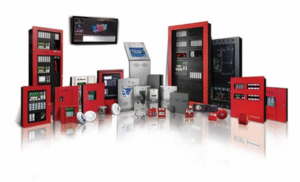In 2025, energy use is one of the biggest challenges facing building owners. Electricity prices are higher than ever, and the demand for eco-friendly practices is no longer optional—it’s expected. Schools, offices, hospitals, and even large residential complexes are under pressure to reduce costs while maintaining a safe and comfortable environment for their occupants.
One practical solution many are turning to is the building management system (BMS). A BMS system acts like the brain of a building, managing everyday operations such as lighting, heating, cooling, and ventilation. Instead of relying on people to turn things on or off, the system works automatically, saving energy while ensuring comfort.
When supported by the right BMS company and reliable BMS suppliers, buildings can cut waste, lower energy bills, and become more sustainable—all without making life harder for the people inside.
What Is a Building Management System?
A building management system functions similarly to its brain. It interfaces with key systems, including lighting, fans, air conditioning, water pumps, and heating equipment. Once in place, it runs these systems automatically according to the time of day, the number of people in a room, or the weather outside.
Imagine a large office building. Without a BMS, the lights might stay on all night if someone forgets to switch them off. With a BMS system, the lights turn off automatically after working hours, while essential areas like security stations remain powered.
The strength of a building management system is its ability to work in the background. It doesn’t need constant attention, yet it keeps everything running in balance.
Why Saving Energy Matters in 2025
By 2025, two major factors will influence how buildings function:
(a) Rising Costs: Electricity and fuel bills are a heavy burden for most institutions. Every year, even modest efficiency gains can result in savings of thousands of dollars.
(b) Environmental Responsibility: Communities are more aware of the need to cut emissions and use fewer natural resources. Buildings are expected to play their part.
This is why a building management system is no longer considered optional. It’s a direct way to control costs, meet energy targets, and reduce environmental impact.
How a BMS System Helps Save Energy
The benefits of a BMS system become clear once you look at how it operates day-to-day:
a) It Turns Things Off Automatically
Energy waste often happens because of human error—someone leaves the air conditioner or lights running in an empty room. A building management system solves this by detecting when spaces are not being used and turning off unnecessary equipment.
b) It Keeps the Temperature Balanced
Most buildings spend the most money on heating and cooling. A BMS system avoids extremes by adjusting settings in line with outdoor weather and occupancy. For example, it might lower cooling power on mild days or reduce heating in unused wings of a school.
c) It Spots Energy Waste
Sometimes equipment begins to consume more power due to faults or poor maintenance. A building management system can detect unusual energy patterns and alert the building manager. Early warnings mean repairs are done before costs spiral.
d) It Focuses Energy Where It’s Needed
Not all areas need the same level of lighting or cooling. A classroom during the summer holidays doesn’t require air conditioning, while a hospital ward always does. A BMS system directs energy only where it’s truly necessary.
Benefits of Using a Building Management System
A BMS system provides advantages that go beyond just saving energy:
a) Lower Bills
Electricity, heating, and cooling account for a big portion of a building’s operating budget. By cutting unnecessary usage, monthly bills drop significantly.
b) Comfortable Spaces
Comfort matters. An office that’s too hot or too cold affects productivity, while poor lighting in schools makes learning harder. A building management system ensures that comfort levels are maintained without wasting energy.
c) Less Repair Work
Equipment that runs constantly without monitoring wears out faster. By monitoring utilization, a BMS system lessens needless stress. When problems do arise, managers are notified quickly, helping prevent expensive breakdowns.
d) A Cleaner Planet
By reducing energy waste, buildings also reduce their carbon footprint. This is especially important in 2025, as cities and governments push for greener communities.
Types of Buildings That Benefit from BMS in 2025
(i) Offices:Keep lighting and cooling efficient, especially after hours.
(ii) Schools:Save energy during weekends, holidays, and evenings while ensuring comfort during class hours.
(iii) Hospitals:Maintain strict temperature and lighting standards for patients and staff while controlling power use.
(iv) Apartments & Housing Societies:Manage shared resources like lifts, pumps, and parking lot lighting more effectively.
These examples show that whether it’s a commercial, educational, or residential setting, a building management system adds value.
Choosing the Right BMS Company
Not all BMS solutions are equal. The BMS firm that develops a system has a significant impact on its success.
A good BMS company should:
(a) Understand the unique needs of your building.
(b) Provide solutions that are easy to use, even for non-technical staff.
(c) Offer reliable after-sales support and maintenance.
(d) Partner with trusted BMS suppliers for quality products.
For example, a small office might only need basic lighting control, while a large hospital requires an advanced setup. A dependable BMS company will recommend the right level of system, rather than pushing unnecessary features.
Getting Started with a BMS System
Adopting a building management system doesn’t need to be overwhelming. Here are some practical steps:
a) Start Small
Begin with one area, such as lighting or air conditioning. Once you see the savings, expand to cover more systems.
b) Train Staff or Residents
Even though the BMS system works automatically, people should understand its purpose. Simple actions, like reporting faults or following schedules, make the system even more effective.
c) Track Progress
Check energy bills and reports monthly. If costs rise unexpectedly, the building management system helps identify whether the issue is faulty equipment or unusual usage.
Everyday Examples of BMS in Action
To see how impactful a BMS system can be, consider these real-life scenarios:
(i) In a school, lights and fans in classrooms shut down automatically after the final bell, saving money during evenings and weekends.
(ii) In a hospital, air conditioning adjusts room by room—keeping operating theatres sterile and cool, while reducing cooling in waiting areas during quiet hours.
(iii) In an office building, elevators, lobby lighting, and security systems remain on at night, but non-essential floors are powered down.
Each of these examples shows how a building management system blends cost savings with comfort and safety.
Final Thoughts
A building management system is more than just equipment—it’s a smarter way to manage buildings. In 2025, with rising energy costs and increasing awareness about sustainability, having a BMS system is quickly becoming the standard.
When supported by a reliable BMS company and trusted BMS suppliers, building owners can reduce waste, cut down costs, and keep occupants comfortable. Energy saved today is not just money saved—it’s also a step toward a cleaner future.
Conclusion
Every building owner faces the same challenge: how to reduce costs without affecting comfort. A building management system is the answer. By monitoring, controlling, and reducing unnecessary energy use, it lowers bills, protects equipment, and improves living and working conditions.
In 2025, a BMS system is no longer a luxury—it is a necessity. With the support of experienced BMS suppliers and the guidance of a capable BMS company, any building can move toward a greener, smarter, and more sustainable future.
Frequently Asked Questions (FAQs)
Q1. What does a building management system do?
It controls lights, heating, cooling, and fans, making sure energy is only used when needed.
Q2. Can small buildings use a BMS system too?
Yes. Many BMS suppliers offer simple systems suited for homes, apartments, and small offices.
Q3. Is it expensive to install a BMS?
The cost depends on the size of the building and the features required. The advantage is that you can start small and expand later.
Q4. How do I choose the right BMS company?
Select one with proven experience, good customer support, and systems that match your building’s size and needs.
Q5. Will a BMS really lower my energy bills?
Yes. Most buildings see noticeable savings within months of installing a BMS system.


